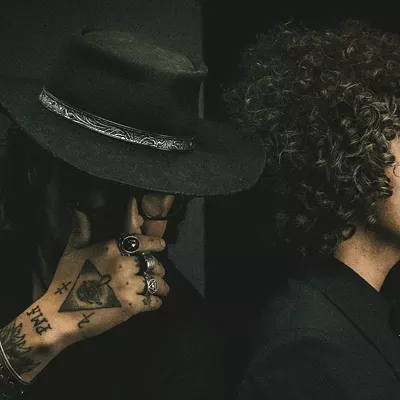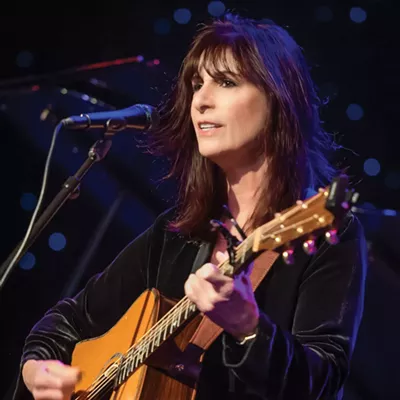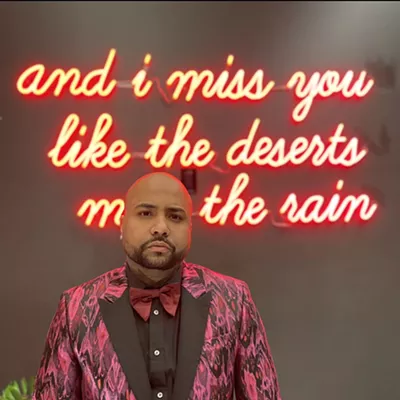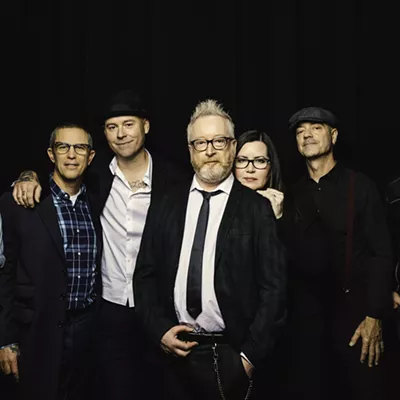There are quite a few bands that have called themselves Earth. There was the short-lived J-Pop trio Earth best known for "Time After Time," the Melbourne death metal Earth, plus the progressive trance project by DJ Sangeet. There was The Earth, the British psychedelic group active fronted by Glenn Campbell, who forced Ozzy Osbourne and Tony Iommi to change their band name, which in 1969 was also Earth. (They decided to name themselves after a Mario Bava film called "Black Sabbath.") Even Bruce Springsteen was once in a band called Earth. But there is only one true Earth, the Olympia, Washington drone metal group led by guitarist Dylan Carlson.
Despite being relatively unknown, this particular Earth has been incredibly influential on bleak, soul-crushing drone music. Taking the primordial snarls from heavy metal, Earth slowed them down in a heroin haze, making practically unlistenable, murmuring epics that explore monochromatic landscapes under scorching infrared sunbeams.
You can thank this Earth for pioneering instrumental drone music, without which we might never have bands like Om or Sleep. Even Sunn O)))'s name wasn't just a reference to the brand of amps they were using—it's also an inverted nod to their roots. Sunn O))) even insisted on Carlson's return after a ten-year hiatus and reissued his earlier material on their label, Southern Lord.
"When I started out, I didn't plan for anything to happen. And, at the time, the audience wasn't as appreciative as they are now," Carlson famously told The Guardian in 2012. "Buzz [Osborne] from the Melvins told me: 'You can do two things—you can try and be the next big thing, or you can just keep doing what you're doing, and eventually people will pay attention. I pursued the second course."
In sharp contrast, Carlson's good friend Kurt Cobain (you might have heard of him) had a very sharp rise to the public's consciousness. Carlson was roommates with Cobain and the two were known to collaborate on so-called "sonic collages." Even most Nirvana fans probably don't know the grunge icon lent vocals on Earth's live album "Sunn Amps and Smashed Guitars," plus Cobain sang backing vocals on "A Bureaucratic Desire for Revenge" and was listed as a "specialist" on Earth's 1990 debut release "Extra-Capsular Extraction." There's also an interesting relationship between Carlson and the gun that Cobain used that you should Google if you want to feel depressed.
Since their formation in 1989, Earth has released eight studio albums, not to mention six live albums, and a string of EPs, but following Carlson's personal problems (heroin, rehab, incarceration, and dealing with Kurt Cobain's suicide--but mostly, it was the heroin) it seemed like Earth was finished.
Like the cicada, the band reemerged from the depths with a markedly different tone, ditching the caustic, minimalist noise for more soundtrack-style moods with some country influences. Yes, country – but not the Brad Paisley bullshit you might be thinking. Specifically, for "Hex; Or Printing in the Infernal Method" (2005) Carlson drew influences from guitarists such as Duane Eddy, Merle Haggard and Roy Buchanan and even Neil Young's sparse soundtrack to the movie "Dead Man."
When Earth comes to Tucson, it'll be the first time they've ever played in this dusty city, but it's not the first time Carlson's visited. "I think the last time I was at that venue was back in the '90s," Carlson laughs when we call him up. "I saw the Meat Puppets and Sun City Girls. I like Tucson."
As a matter of fact, judging from Carlson's discography, the desert has been no small influence on the artist. When asked about it, he can't seem to attribute it to living in Las Cruces, New Mexico as a kid or all the westerns he watched as a youngster.
"I've always liked environments that are sort of austere, like deserts, where on the surface it could be slightly grim or bleak, but they sort of have to reveal themselves to you," Carlson tells us. "When people go on vacation to somewhere mind-numbingly beautiful, I never quite understood the big deal [about] those places. Like tropical islands or lush forests. I mean, I like forests, sort of dark, piney, or old trees and stuff as opposed to the idea of the jungle. That just doesn't appeal to me all that much."
Cormac McCarthy is another remarkable influence on Carlson, who is now 47. Many of the song titles on "Hex" and "The Bees Made Honey In The Lion's Skull" are lines directly lifted from the "No Country For Old Men" author's works.
"My favorites [of McCarthy] are 'Blood Meridian' and 'The Border Trilogy.' The earlier stuff like 'Child of God' or 'Suttree,' I'm not so into, I guess," Carlson says. "I definitely like his westerns. I think that earlier eras is more Southern Gothic to me or something. I don't necessarily like that stuff as much. Definitely like his western stuff better. That was the sort of idea behind 'Hex' was there's that Jack Bruce song, 'Theme for an Imaginary Western,' and that's one of my favorite songs."
The band's latest, "Primitive And Deadly," was released in late 2014, proving not all of Earth's music is quite so abstract. While Carlson has always been the driving force behind Earth, he invites a wealth of guests on this album, including Rabia Shaheen Qazi of Rose Windows, former Screaming Trees vocalist Mark Lanegan, Brett Netson of Built to Spill and Jodie Cox of Narrows. This is the first Earth album since "Pentastar: In the Style of Demons" (1996) to feature vocals. Even with only five tracks, not one shorter than eight minutes, "Primitive" proves that Earth is still the ground-shaking, ear-bleeding behemoth twenty years later. Which makes it all the more exciting when Carlson tells us to expect more in the future.













